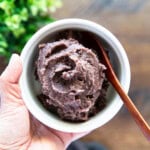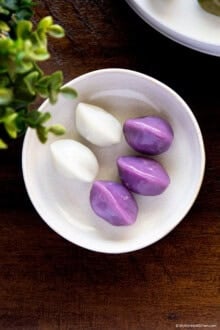Sweet red bean paste (pat anggeum) is silky, sweet, and nutty. It’s a classic filling for Korean rice cakes, buns, and many other Asian desserts. This easy recipe blends the beans into a smooth paste without sieving, saving you time while still giving you that velvety, melt in your mouth texture.
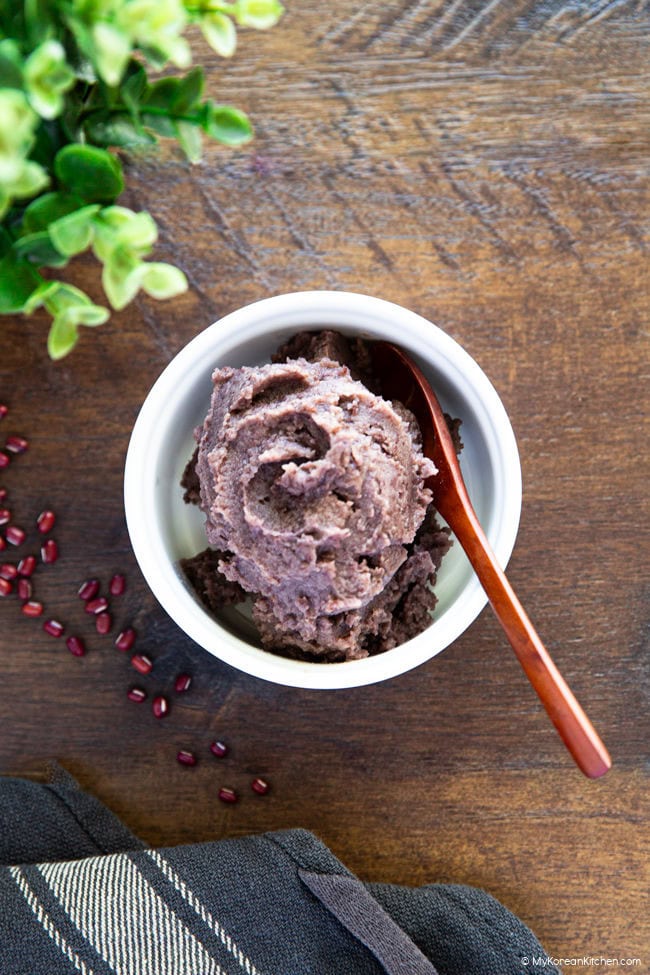
I’ve loved sweet red bean paste since I was little. It’s one of those flavors that instantly takes me back to childhood snacks and family celebrations.
What Is Sweet Red Bean Paste?
Sweet red bean paste, called pat-anggeum (팥앙금) in Korean, is a smooth, sweetened paste made from adzuki beans. It’s a classic filling for many Korean rice cakes, buns, and pastries, and you’ll also see it in Japanese desserts where it’s known as anko.
Japanese red bean paste comes in several textures, from chunky tsubuan to silky smooth koshian. Korean desserts usually use the smooth style, though chunky versions are also used at times, and the detailed texture classifications common in Japan are less emphasized.
Why This Recipe
I’ve always loved sweet red bean paste, especially the ultra-smooth kind with zero bean skins. Most recipes will suggest you to push the beans through a sieve to strip the skins, but that step takes a long time and is so labor intensive it’ll wear out your arm!
My version skips the sieve altogether. Sure, you can still do it if you really want to, but I find it almost unnecessary. Because we’re blending the beans until they’re completely smooth. It only takes about 3 to 4 minutes, and you end up with a silky, velvety red bean paste that’s ready for all your favorite Korean desserts. Fuss-free and absolutely delicious. I don’t think you’ll be disappointed!
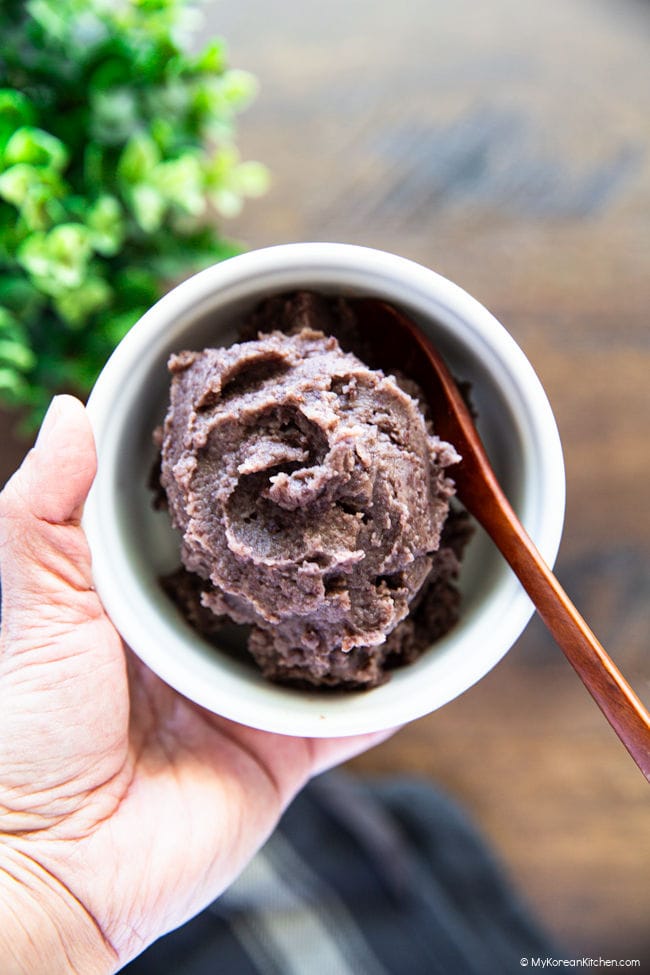
Ingredients
- 120 g (4.2 oz) red beans (adzuki beans, pat, 팥)
- 4 cups (1 L) water, divided
- 2 Tbsp dark brown sugar
- 3 Tbsp white sugar
- 1/2 tsp salt
- 2 Tbsp Korean rice syrup or golden syrup (both recommended) or light corn syrup
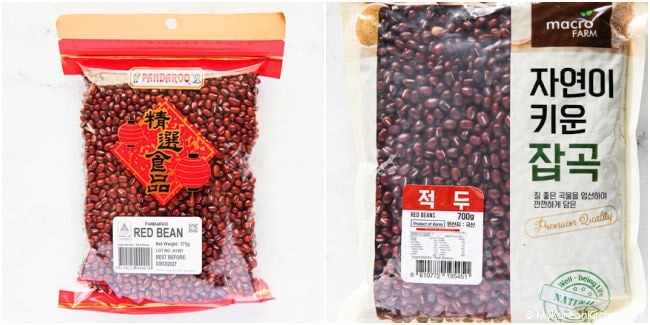
How to Make Smooth Red Bean Paste
1. Prepare the beans
Rinse the red beans several times in cold water, then place them in a bowl and cover with enough warm water to fully submerge. Soak for about 12 hours, or overnight.
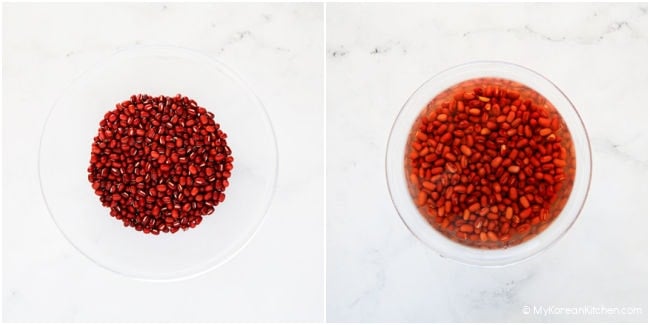
2. First boil
Drain the soaked beans and place them in a pot with about 2 cups (500 ml) of fresh water. Bring the beans to a boil, then simmer for 2-3 minutes and drain. This quick blanch helps remove the earthy taste from the beans and makes the final paste taste cleaner.
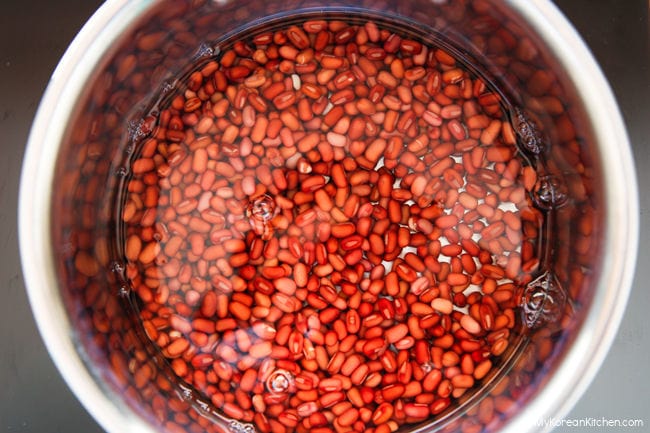
3. Second boil
Return the beans to the pot with 2 cups (500 ml) of fresh water. Bring to a boil over high heat, then lower the heat to medium and simmer. As the beans soften, reduce the heat again to medium-low and continue cooking until they are fully tender, about 30 to 40 minutes.
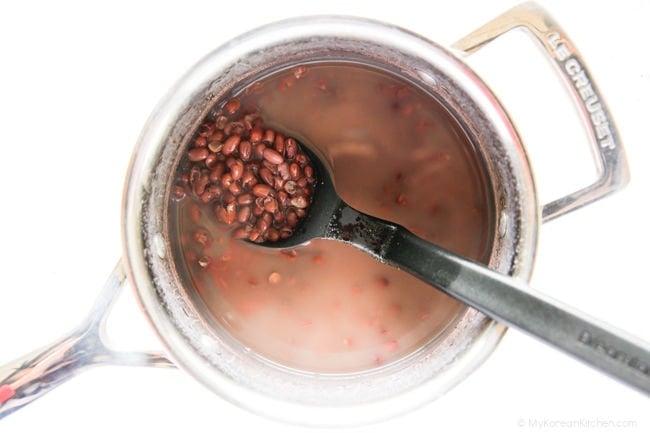
4. Blend the beans
Once the beans are cooked through, drain them but reserve about 1/3 cup (80 ml) of the cooking water. Transfer the beans to a blender, add the reserved water, and blend until smooth and velvety. You shouldn’t notice any bean skins or texture at this point.
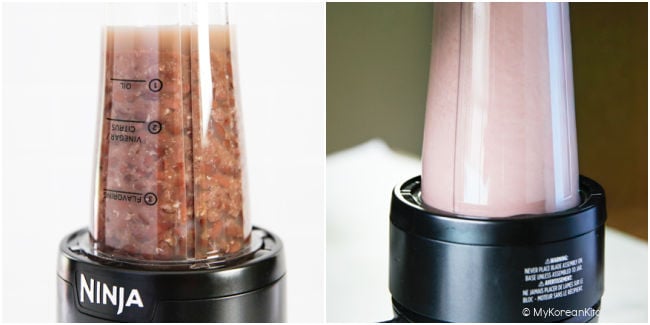
5. Sweeten and thicken
Pour the blended beans back into a clean pot. Add the sugars, salt, and rice syrup or golden syrup. Cook over medium to medium-low heat, stirring constantly to prevent sticking, until the paste thickens, about 10 minutes. Adjust the cooking time depending on your preferred consistency. For use as a filling in Korean rice cakes, the paste should be thick yet pliable so it can hold its shape. It should look like soft mashed potatoes when ready.
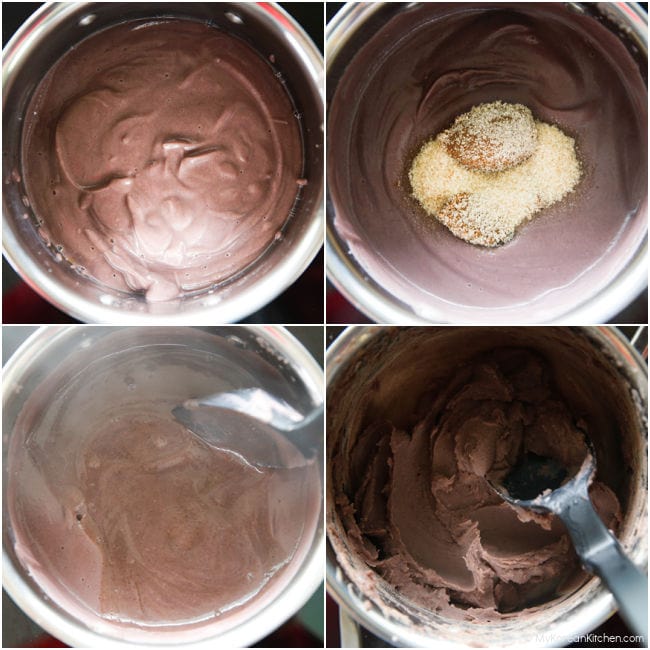
6. Finish
Let the red bean paste cool a bit before you use it in your favorite Korean desserts. While it’s warm, it’s soft and silky; as it cools, it’ll firm up a little more.
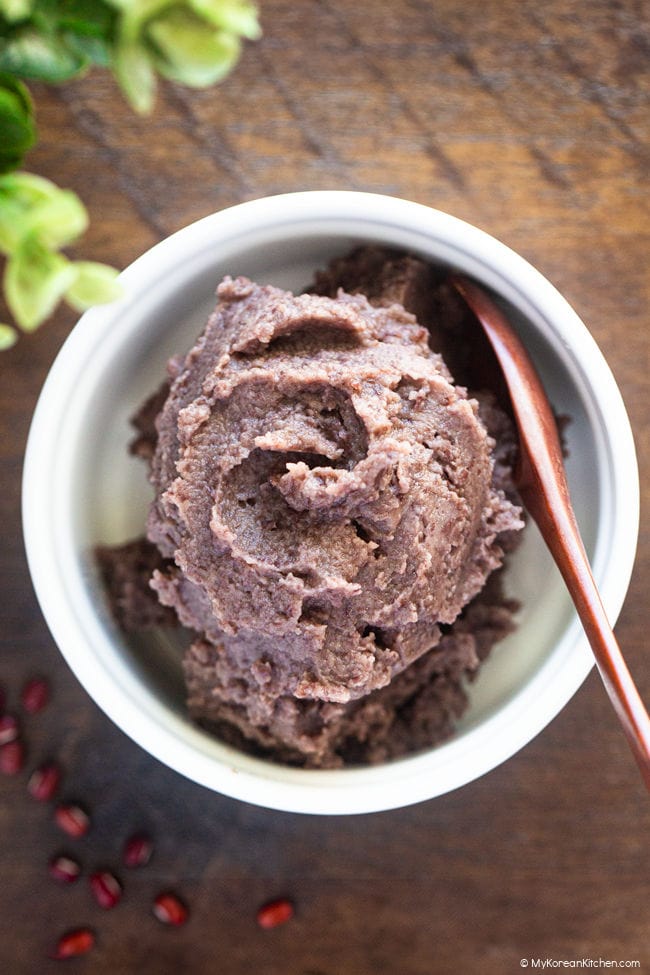
Cooking Tips
Soaking: Soak the beans overnight so they cook more evenly and in less time. Plan ahead if you can.
First boil: That quick blanch and drain step really helps get rid of the earthy or slightly bitter taste that red beans can have. It’s a small step but makes a big difference in the final flavor.
Doneness: Red beans should be tender enough to mash easily between your fingers before blending. If they feel grainy or dry in the center, cook a little longer.
Blending tip: Start blending with the reserved cooking water and add a splash more if the paste looks too thick. The goal is a silky, spoonable consistency.
Sweeteners: Some Korean recipes use light corn syrup because it gives the paste a glossy finish and helps prevent it from drying out. But I prefer Korean rice syrup or golden syrup. They add a richer, caramel-like flavor that pairs beautifully with red beans.
Storage Tips
Store the paste in an airtight container in the refrigerator. It keeps well for about 4 to 5 days, but for the best flavor and texture, enjoy it within the first 2 to 3 days. For longer storage, place the paste in a freezer-safe container. It will keep for up to 2 months. Thaw in the refrigerator overnight before using.
How to Use Sweet Red Bean Paste
Below are some of the most popular Korean desserts that use sweet red bean paste. I hope you’ll try one (or all) of them and see just how versatile and delicious this paste can be.
- Korean Shaved Ice (Patbingsu) – Fluffy shaved ice topped with fruit, red beans, and condensed milk. The ultimate summer treat.
- Korean Walnut Pastry (Hodugwaja) – Soft little cakes filled with sweet red bean paste and walnuts. Nutty, cozy, and irresistible.
- Red Bean Mochi (Chapssaltteok) – Chewy rice cakes stuffed with silky red bean paste. Sweet, bouncy, and so satisfying.
- Fish Shaped Pastry (Bungeoppang) – Crispy, golden pastry filled with sweet red bean paste. A fun street snack you’ll want more of.

How to Make Sweet Red Bean Paste - Silky and Fuss-Free Recipe
Ingredients
- 120 g red beans (adzuki beans, pat)
- 4 cups water (1 L), divided
- 2 Tbsp dark brown sugar
- 3 Tbsp white sugar
- 1/2 tsp salt
- 2 Tbsp Korean rice syrup or golden syrup (both recommended), or light corn syrup.
Instructions
- Prepare the beans Rinse the red beans several times in cold water, then place them in a bowl and cover with enough warm water to fully submerge. Soak for about 12 hours, or overnight.
- First boil Drain the soaked beans and place them in a pot with about 2 cups (500 ml) of fresh water. Bring the beans to a boil, then simmer for 2-3 minutes and drain. This quick blanch helps remove the earthy taste from the beans and makes the final paste taste cleaner.
- Second boil Return the beans to the pot with 2 cups (500 ml) of fresh water. Bring to a boil over high heat, then lower the heat to medium and simmer. As the beans soften, reduce the heat again to medium-low and continue cooking until they are fully tender, about 30 to 40 minutes.
- Blend the beans Once the beans are cooked through, drain them but reserve about 1/3 cup (80 ml) of the cooking water. Transfer the beans to a blender, add the reserved water, and blend until smooth and velvety. You shouldn’t notice any bean skins or texture at this point.
- Sweeten and thicken Pour the blended beans back into a clean pot. Add the sugars, salt, and rice syrup or golden syrup. Cook over medium to medium-low heat, stirring constantly to prevent sticking, until the paste thickens, about 10 minutes. Adjust the cooking time depending on your preferred consistency. For use as a filling in Korean rice cakes, the paste should be thick yet pliable so it can hold its shape. It should look like soft mashed potatoes when ready.
- Finish Let the red bean paste cool a bit before you use it in your favorite Korean desserts. While it’s warm, it’s soft and silky; as it cools, it’ll firm up a little more.
Notes
Nutrition Info (per serving)
The nutrition information shown is an estimate provided by an online nutrition calculator. It should not be considered a substitute for a professional nutritionist’s advice.
